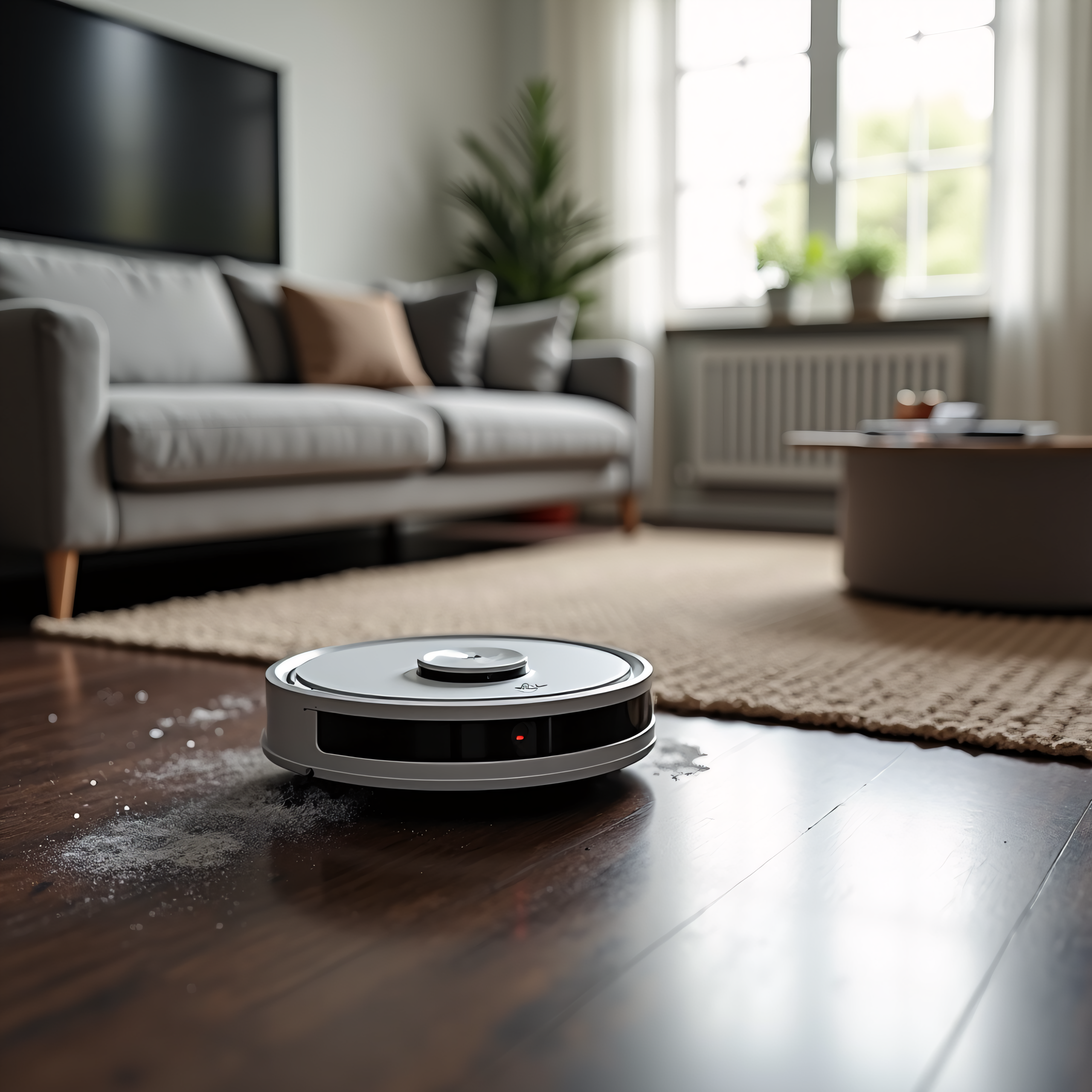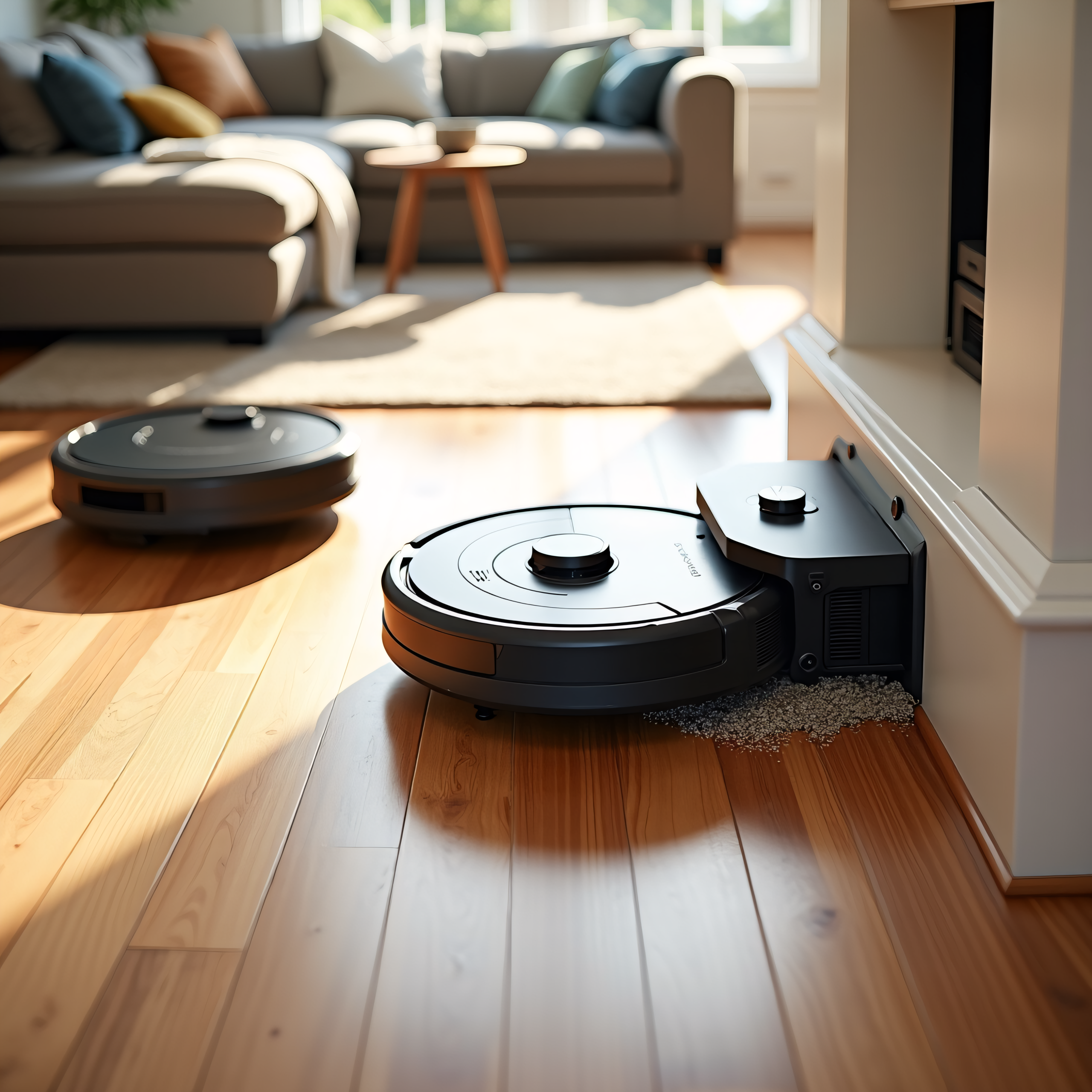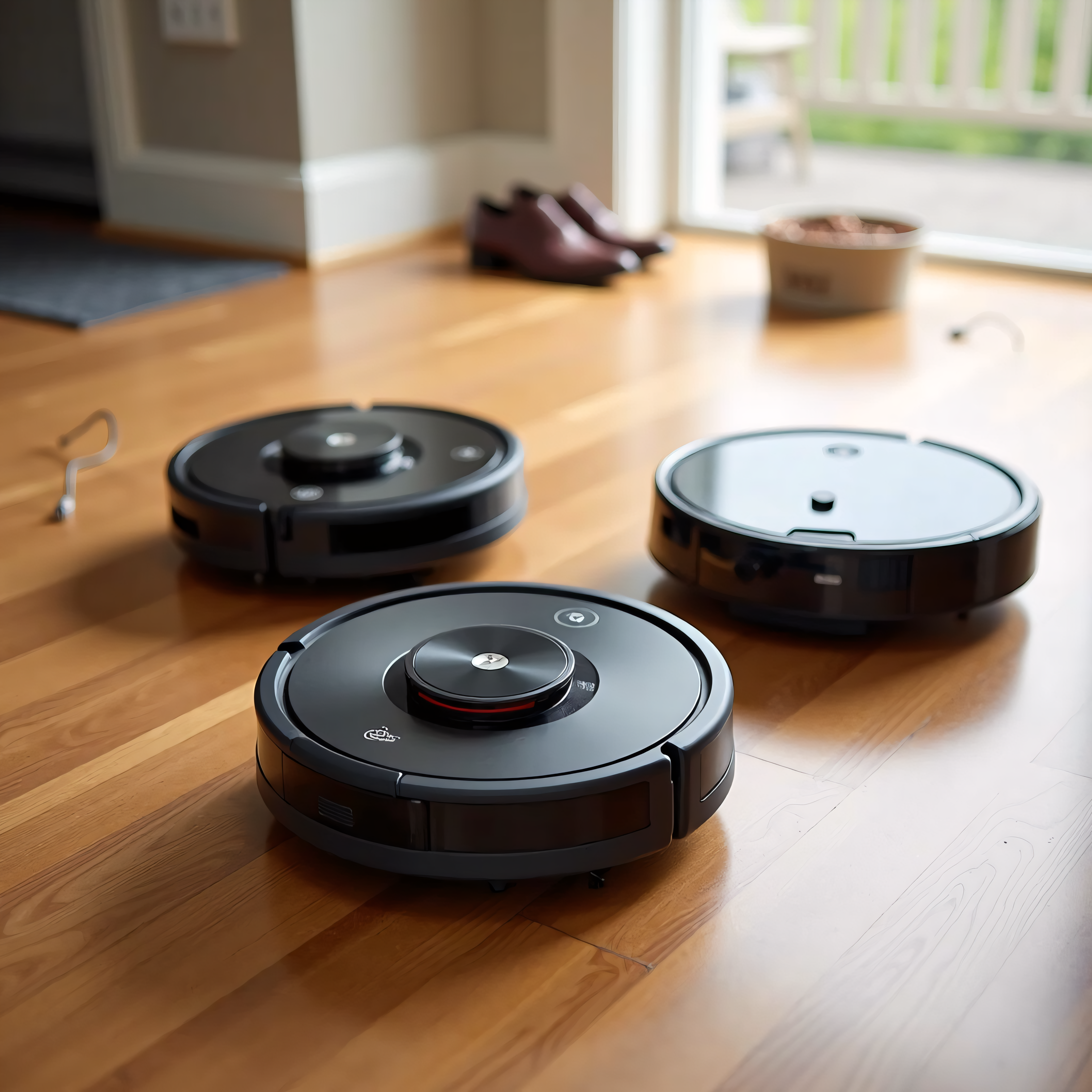estimated reading time: 7 minutes
How Do Robot Vacuums Work?
Robot vacuums operate using a combination of mechanical and technological components. They typically consist of rotating brushes that sweep debris into a central suction path, a powerful suction motor to collect the gathered material, a dustbin to store collected waste, and a battery that powers the entire system. Crucially, they utilize various navigation systems to move around your home. Early models employed a simple “random bounce” approach, but modern robots use more advanced technologies such as mapping (with LiDAR or vSLAM), gyroscopes, and sophisticated algorithms to efficiently clean spaces. Many offer different cleaning modes like “Auto,” “Spot,” “Edge,” and “Max”, allowing for customized cleaning experiences. Smart home integration is also common, with many models offering Wi-Fi connectivity, app control, and compatibility with voice assistants like Alexa and Google Assistant.
Top Robot Vacuum Brands: An Overview
Roomba
iRobot’s Roomba is arguably the most recognizable name in robot vacuums. Established as a pioneer in the industry, Roomba has a strong reputation for reliability and performance. Their core technologies, including iAdapt navigation and, in more recent models, vSLAM, provide efficient cleaning patterns. Roomba offers a wide range of models, from entry-level options to high-end models with advanced features like self-emptying docks and advanced mapping. Roomba’s strengths lie in its generally strong suction power, robust build quality, and intuitive smart features. However, they can be expensive, and some models may struggle in particularly cluttered environments. Popular series include the i-series, s-series, and j-series, each offering different levels of functionality and price points.
More on Blogs: : A Comprehensive Guide to Buying the Right Roomba /Roomba Mapping / Buying the Right Roomba
Roborock
Roborock has quickly gained prominence as a strong competitor to Roomba. Known for its precise mapping capabilities, often employing LiDAR technology, Roborock vacuums excel at efficient and thorough cleaning. Their ReactiveAI technology further enhances navigation and obstacle avoidance. Roborock models span a wide range, from budget-friendly options to top-of-the-line models with advanced features such as mopping capabilities and self-emptying dustbins. While Roborock vacuums boast impressive suction power and mapping accuracy, the app interface can be considered somewhat complex by some users, and not all models include self-emptying features. Popular series include the S-series and Q-series.
More On blog: A Comprehensive Guide to Models from OKP, Roborock & More / iRobot Roomba i7+, j7+, and Roborock S7 Compared /
Shark
Shark, a well-established name in the vacuum cleaner industry, also offers a range of robot vacuums. While not as technologically advanced as Roomba or Roborock in terms of mapping, Shark robots generally offer strong suction and convenient features like self-cleaning brushrolls. Shark robot vacuums are often priced competitively, making them an attractive option for budget-conscious consumers. However, their navigation capabilities may be less sophisticated than mapping models, and they can be somewhat louder than some competitors.
Eufy
Eufy positions itself in the market as a provider of affordable and user-friendly robot vacuums. The Eufy Robovac 11s Slim, for instance, is a popular choice due to its slim profile, allowing it to clean under low-clearance furniture. Its strengths include quiet operation, long battery life, and an attractive price point. However, it lacks the advanced mapping and smart features found in higher-end models.
Neato
Neato is known for its distinctive D-shaped design, which is specifically advantageous for cleaning along walls and in corners. The Neato Botvac 80, for example, utilizes laser smart navigation for effective cleaning. While Neato robots generally offer good edge cleaning, older models have faced reliability concerns and occasional software glitches.
Deep Dive into Specific Models
Dyson 360 Eye
The Dyson 360 Eye, while now discontinued, represents a significant milestone in robot vacuum technology. Its unique selling point was its 360° vision system, coupled with Dyson’s powerful cyclone technology. While it offered impressive suction, software issues and a high original price contributed to its discontinuation. It serves as an interesting case study in the evolution of robot vacuum technology.
Eufy Robovac 11s Slim
The Eufy Robovac 11s Slim excels in its compact design, making it ideal for homes with low-clearance furniture. Its quiet operation and long battery life are significant advantages. It is best suited for homes with primarily hard floors and minimal clutter.
Neato Botvac 80
The Neato Botvac 80’s D-shaped design enhances its ability to clean corners and edges effectively. Its laser smart navigation ensures efficient cleaning coverage. It’s a suitable choice for homes with various floor types but may struggle with extremely high pile carpets.
Key Features to Consider When Buying a Robot Vacuum
Several key features should be considered when choosing a robot vacuum:
- Navigation & Mapping: LiDAR and vSLAM are advanced mapping technologies that provide efficient cleaning coverage.
- Suction Power: Suction power (often measured in Pascals (Pa) or Air Watts) should be considered in relation to your flooring type and the amount of debris you expect to clean.
- Battery Life: Longer battery life reduces the frequency of recharging, ensuring more continuous cleaning.
- Dustbin Capacity: Larger dustbins reduce the frequency of emptying, increasing convenience.
- Smart Features: App control, scheduling, zone cleaning, and virtual walls offer greater flexibility and control.
- Floor Type Compatibility: Ensure compatibility with your specific floor types (hardwood, carpet, tile, rugs).
- Self-Emptying Bases: Self-emptying docks significantly reduce maintenance requirements.
Robot Vacuum Comparison Chart
| Model | Price (USD) (approx.) | Navigation | Suction Power | Battery Life (min) | Dustbin Capacity (ml) | Smart Features | Pros | Cons |
|---|---|---|---|---|---|---|---|---|
| Roomba i7+ | $700 – $1000 | vSLAM | High | 75-90 | 400 | App control, self-emptying | Strong suction, reliable, smart features | Expensive, may get stuck in clutter |
| Roborock S7+ | $600 – $800 | LiDAR | High | 180 | 470 | App control, mopping, self-emptying | Accurate mapping, mopping, strong suction | Complex app, some models lack self-emptying |
| Shark IQ Robot R101AE | $400 – $600 | Random & Sensors | Medium-High | 90-120 | 300 | App control, self-emptying | Affordable, strong suction, self-cleaning brushroll | Limited navigation, potentially noisy |
| Eufy Robovac 11s Slim | $200 – $300 | Random | Medium | 100-120 | 0.6L | Basic app control | Quiet, long battery life, affordable | Limited features, no mapping |
| Neato Botvac 80 | (Discontinued) | Laser | Medium-High | 90-120 | 0.7L | Basic app control | Good edge cleaning, laser navigation | Reliability concerns (older models), software glitches |
| Dyson 360 Eye | (Discontinued) | 360° Vision | High | 40-60 | 0.4L | Limited | Powerful suction, unique vision system | High price (originally), software issues, limited availability |
*Note: Prices are approximate and may vary based on retailer and sales.*
Robot Vacuum Maintenance & Troubleshooting
Regular maintenance is crucial for optimal performance. This includes emptying the dustbin frequently, cleaning the brushes regularly, and replacing filters as needed. Common troubleshooting issues include the robot getting stuck, navigation problems, and connectivity issues. Keeping the sensors clean is vital for accurate navigation.
Future Trends in Robot Vacuum Technology
Future trends point towards even more advanced robot vacuums:
- Object Recognition and Avoidance: Improved ability to identify and avoid obstacles more effectively.
- Advanced Mopping Capabilities: More sophisticated mopping systems with improved water control and cleaning power.
- AI-Powered Cleaning Customization: Personalized cleaning routines based on individual preferences and home layouts.
- Multi-Floor Mapping and Cleaning: Ability to map and clean multiple floors in a home seamlessly.
Conclusion
Choosing the right robot vacuum depends on individual needs and home environments. This guide has highlighted key features and provided comparisons of various leading models and brands. By prioritizing the features that best match your requirements, you can find the perfect robotic cleaning companion for your home.
More on blog:
Smart Cleaning/ Effortless Cleaning & Reclaiming Your Time
FAQ
Q: What is the difference between LiDAR and vSLAM navigation?
A: LiDAR (Light Detection and Ranging) uses lasers to create a precise 3D map of your home, enabling highly accurate navigation. vSLAM (Visual Simultaneous Localization and Mapping) uses cameras to create a map, offering good navigation but generally less precise than LiDAR.
Q: How often should I empty the dustbin?
A: This depends on the dustbin’s capacity and how frequently you use the robot vacuum. Generally, you should empty it when it’s about ¾ full.
Q: What type of filter should I use?
A: Most robot vacuums use HEPA filters to trap fine particles. Consult your robot vacuum’s manual for specific filter recommendations.
Q: My robot vacuum is getting stuck. What should I do?
A: Ensure there are no obstacles in its path, clear any entangled hair or debris from the brushes, and check the sensors for obstructions.
Source: Quora


